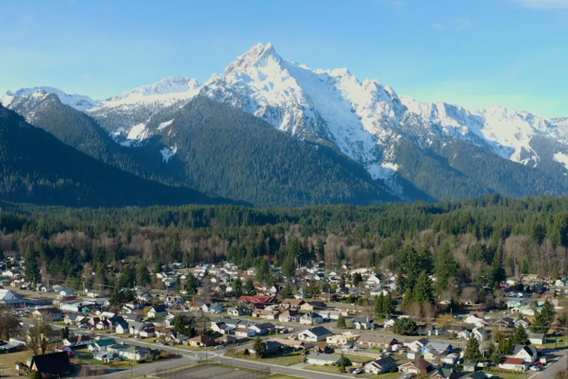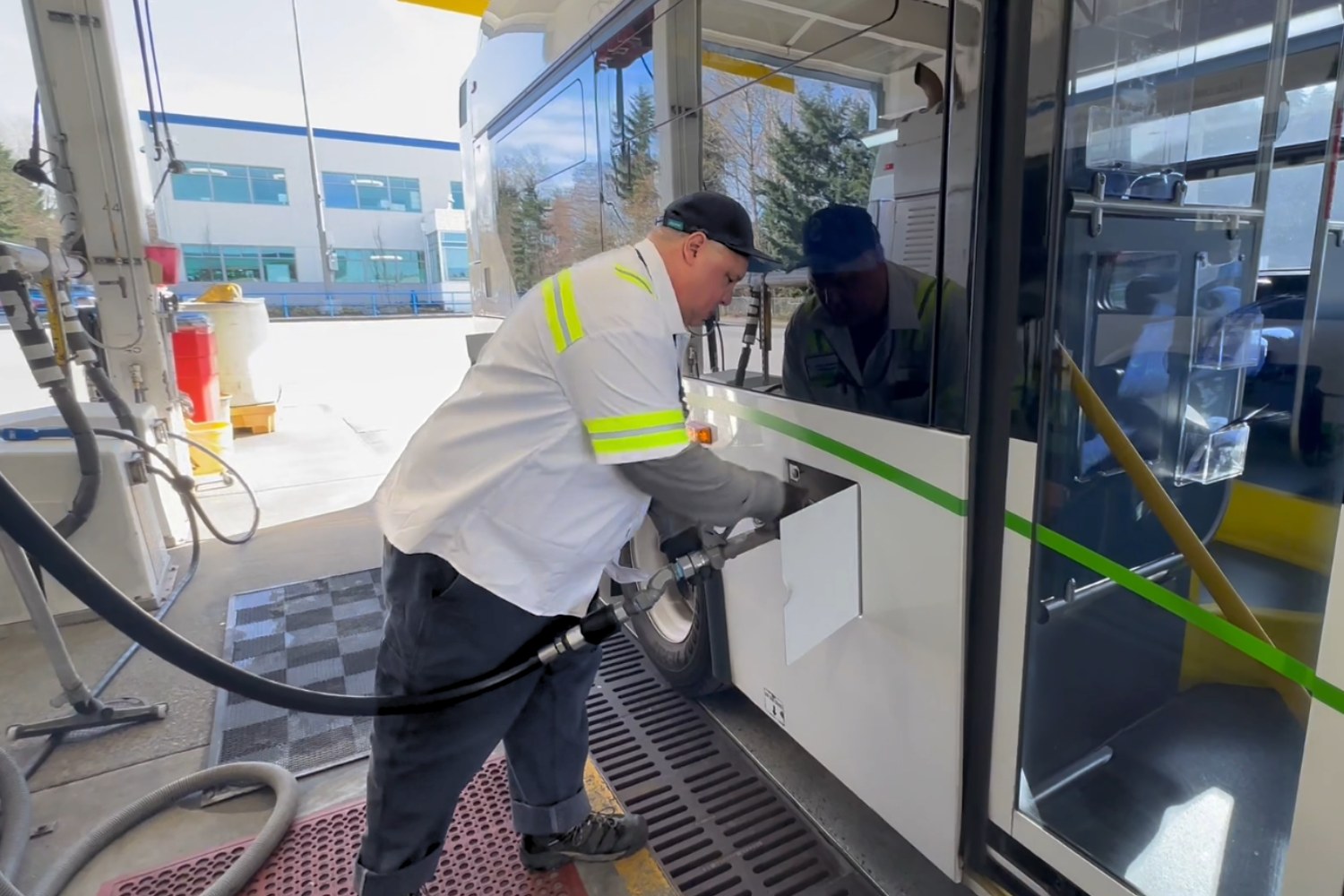Getting around Darrington with Community Transit

Community Transit is here to get you where you want to go. We are proud to be a part of the Darrington community — we live here, ride here, and drive here. Wherever you need to go in Darrington, feel good about how you get there.
About Darrington
Darrington is a small mountain town in the foothills of the Cascades, located where two rivers once joined in a valley between the Sauk and the Stillaguamish rivers. The Sauk-Suiattle tribe were the first people to settle in the valley and today their tribe headquarters are located in Darrington. Darrington is connected to nearby areas by State Route 530, which runs along the two rivers towards the city of Arlington, located 30 miles to the west.
Town is home to a variety of small logging and lumber companies as well as Hampton Lumber’s state-of-the-art mill. Darrington’s location near the Mt. Baker-Snoqualmie National Forest and scenic rivers make it a popular destination for outdoor recreation.
People traveling to and from the area can ride from Community Transit buses along Route 230, which connects people to the neighboring Smokey Point Transit Center in Arlington. DART paratransit service and Vanpool are also options. The Sauk-Suiattle DC (Darrington-Concrete) Direct Shuttle Bus Service, a program operated by the Sauk-Suiattle Indian Tribe, also offers public transportation to residents of the reservation, Darrington, and surrounding communities.
Spanning over 27 miles between the City of Arlington and the Town of Darrington, the Whitehorse Regional Trail follows the path of the former BNSF railroad through the North Stillaguamish River Valley, offering a scenic travel option for people hiking, biking, and riding horseback.
Popular Destinations
Rinse and repeat: Who washes Community Transit's buses?

Pictured above: Tim Vogt, Lead Vehicle Service Attendant, fueling a bus during his shift.
You might not see a Community Transit bus in line at your local car wash or topping off at the nearby gas station. But just like any vehicle, it’s important to keep our buses fueled and clean so that passengers can have a clean and comfortable ride. So, who takes care of these tasks?
Enter Community Transit’s awesome team of Vehicle Service Attendants (VSAs).
They are the “magic” behind a bus driver parking their bus in the bus yard at the end of a long day and coming back to it fueled, cleaned, and ready to go early the next morning.
What does a VSA do?
Typically, one VSA works during the day, with most others clocking in for their shift at about 3 p.m. and finishing after midnight. Armed with Commercial Drivers Licenses (CDL), they can maneuver vehicles within the bus lot. During a normal day, a team of VSAs fuel and wash about 190 buses — rain or shine.
Fun fact: The only time VSAs stop washing the buses is when temperatures drop below 35 degrees because water begins to freeze. As soon as it warms up, they are right back to it!
How do you wash a bus?
The washing process begins with a thorough inspection of the bus exterior and engine for any damage and check of the vehicle’s oil level. Then it's off to the on-site fueling station, where VSAs pump diesel into the buses.
Fun fact: A Community Transit bus fuel tank can hold 100-150 gallons of fuel depending on the model.
After fueling, the VSAs tidy up the interiors of the bus. This includes picking up trash, vacuuming, and mopping the floors. This cleaning is for the every-day grit and grime that might accumulate from riders getting on and off the bus.
For more detailed cleaning, Community Transit hires contract employees who specialize in cleaning. Their weekly deep cleans include wiping windows, dusting, sanitizing surfaces, and vacuuming seats. The contracted cleaners also provide monthly vacuuming and annual steam cleaning of fabric surfaces on the buses.
Next, it's time to drive the bus through the bus wash, conveniently located across from the fueling station. Before going through the wash, VSAs will sometimes give an extra scrub to bus wheels and exteriors if they are especially dirty.
Another fun fact: About 85% of the water used in the bus wash is captured, filtered, and re-used. Fresh water is only used for the final rinse cycle of the bus wash. Sustainability is a big deal at Community Transit!
The bus wash is similar to a drive-through car wash, just bigger. VSAs pull the bus up to the wash and drive through it slowly, making sure that every part of the bus from the front to the back gets clean. It takes about two minutes for a bus to go through the wash. Once the wash is complete, the buses are parked in the lot to dry.
And that’s it! With the buses cleaned, fueled, and ready for action, the VSAs work ensures passengers enjoy a smooth and pleasant journey each day.
